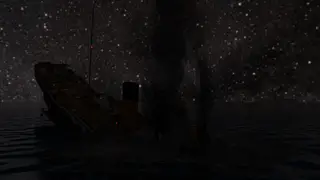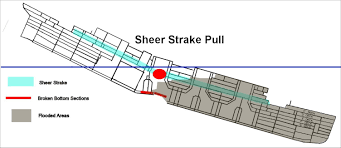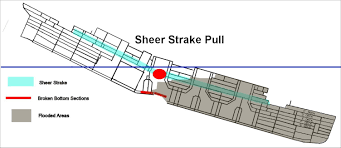ShinGoji (Kiefer)
Member
Personally, I myself believe the meaning of "Top-Cant" is a sudden jolting/moving of the stern upwards after the break-up settling then after again, before taking it's final plunge, Just like Roy Mengot's break-up that also shows the stern being violently pulled upwards via B-deck (Strength Deck), I myself just wanted to ask if what are your personal opinions on George Symons' depiction on the Top-Cant and how do you think the stern behaved.
There have been 3 definitions that I myself have been seeing around the internet on the Top Cant, one is well known and that is being what I believe in which is a sudden jolting/moving of the stern upwards after the break-up settling then after again, another explanation says that it's just the stern going vertical, while another definition being the stern just moving and bobbing like a cork as the stern settles after the break-up.
This is how I view the "Top-Cant" as said by George Symons, which looks like Roy Mengot's Theory
There have been 3 definitions that I myself have been seeing around the internet on the Top Cant, one is well known and that is being what I believe in which is a sudden jolting/moving of the stern upwards after the break-up settling then after again, another explanation says that it's just the stern going vertical, while another definition being the stern just moving and bobbing like a cork as the stern settles after the break-up.
This is how I view the "Top-Cant" as said by George Symons, which looks like Roy Mengot's Theory




